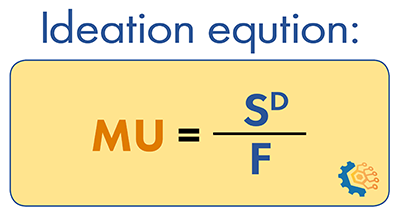How to Conduct a Successful Ideation Process
 You have a company that’s experienced some success, but you need more. You want to excel in innovation, but lack the necessary resources or have trouble determining a starting point. Sound familiar? Consider an ideation process to reach your growth goals.
You have a company that’s experienced some success, but you need more. You want to excel in innovation, but lack the necessary resources or have trouble determining a starting point. Sound familiar? Consider an ideation process to reach your growth goals.
Ideation uses a systematic approach to the creation and use of new concepts and ideas. As part of the lengthy process of innovation engineering, ideation serves as a structure for solving conflicts in the realms of design, mechanics, and market.
Before beginning the ideation process, examine your potential in three categories: growth market, mature market, and declining market. These phases determine what can be done to enhance product leadership, customer relations, and existing products. Innovation in these core areas can maximize both top and bottom line results.
What Elements Make a Successful Ideation Session?
There is a substantial amount of time and effort that goes into this process, but MAGNET has condensed the ideation methodology into an equation:

In order to have a Meaningful Unique idea (MU), three elements are required.
Stimulus (S) refers to the people participating in the ideation session. Do they know what’s going on? Do they know what obstacles must be overcome to solve pressing problems? Participants in the process play an integral role: they analyze existing issues to work toward ultimate solutions.
Diversity (D) is the wide variety of perspectives needed to maximize possible solutions. Leadership, engineering, sales, marketing, customer service, floor supervisors and machine operators all have unique and valuable experiences with the same product. A diverse group provides knowledge that will help from the preliminary engineering process all the way to determining the product market.
No Fear (F) is the final part of the equation. Ideation sessions should be centered on learning, listening, and healthy debate. Every idea has merit, and no one should be afraid of looking stupid or failing in some way. The ideation process lead must create an atmosphere of trust and respect.
How to Structure an Ideation Session
The ideation process is a long one and can take anywhere from one hour to several days. Regardless of length, a thorough ideation process is built on the following steps:
- Find your problem
- Charter to define your problem and objectives
- Research to find stimulus
- Utilize ideation methods
- Objectively screen and score your ideas
There are four main methods your company should use during your ideation session:
- Idea engineering
- Concept engineering
- Value engineering product
- Value engineering process
What to Do with Your Ideation Session Output
Once concepts and ideas are determined, they must be rated and prioritized. The following categories are examples that can be placed on your scorecard. Feel free to contact us for guidance if you are interested in covering more ground.
- Time to market
- Capital investment
- IP potential
- Development cost (engine and prototype)
- Manufacturability
- ROI
Depending on your top idea(s), it might be time to conduct the product development and launch process. Or you might be adjusting your marketing to reach new audiences. Regardless of the outcome, it’s important to immediately document the ideas and start moving toward implementation.
If you have questions about how to hold an ideation session for your organization, please let us know. We generate approximately 60 new concepts and four design categories in an average ideation session to help our clients achieve their growth goals.





